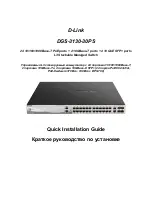
21-4
Table 21-3
Default output rules for different output destinations
LOG
TRAP
DEBUG
Output
destinati
on
Modules
allowed
Enabled/
disabled
Severity
Enabled/
disabled
Severity
Enabled/
disabled
Severity
Console
default
(all
modules)
Enabled Warning Enabled Debug Enabled Debug
Monitor
terminal
default
(all
modules)
Enabled Warning Enabled Debug Enabled Debug
Log host
default
(all
modules)
Enabled
Informatio
nal
Enabled Debug Disabled Debug
Trap
buffer
default
(all
modules)
Disabled
Informatio
nal
Enabled Warning Disabled Debug
Log buffer
default
(all
modules)
Enabled Warning Disabled Debug
Disabled Debug
SNMP
module
default
(all
modules)
Disabled Debug
Enabled Warning Disabled
Debug
System Information Format
The format of system information varies with the output destinations.
z
If the output destination is not the log host (such as console, monitor terminal, logbuffer, trapbuffer,
SNMP), the system information is in the following format:
timestamp sysname module/level/digest:content
For example, a monitor terminal connects to the device. When a terminal logs in to the device, the log
information in the following format is displayed on the monitor terminal:
%Jun 26 17:08:35:809 2008 Sysname SHELL/4/LOGIN: VTY login from 1.1.1.1
z
If the output destination is the log host, the system information is in the following format according
to RFC 3164 (The BSD Syslog Protocol):
<Int_16>timestamp sysname %%nnmodule/level/digest: source content
z
The closing set of angel brackets < >, the space, the forward slash /, and the colon are all required
in the above format.
z
The format in the previous part is the original format of system information, so you may see the
information in a different format. The displayed format depends on the tools you use to view the
logs.
















































